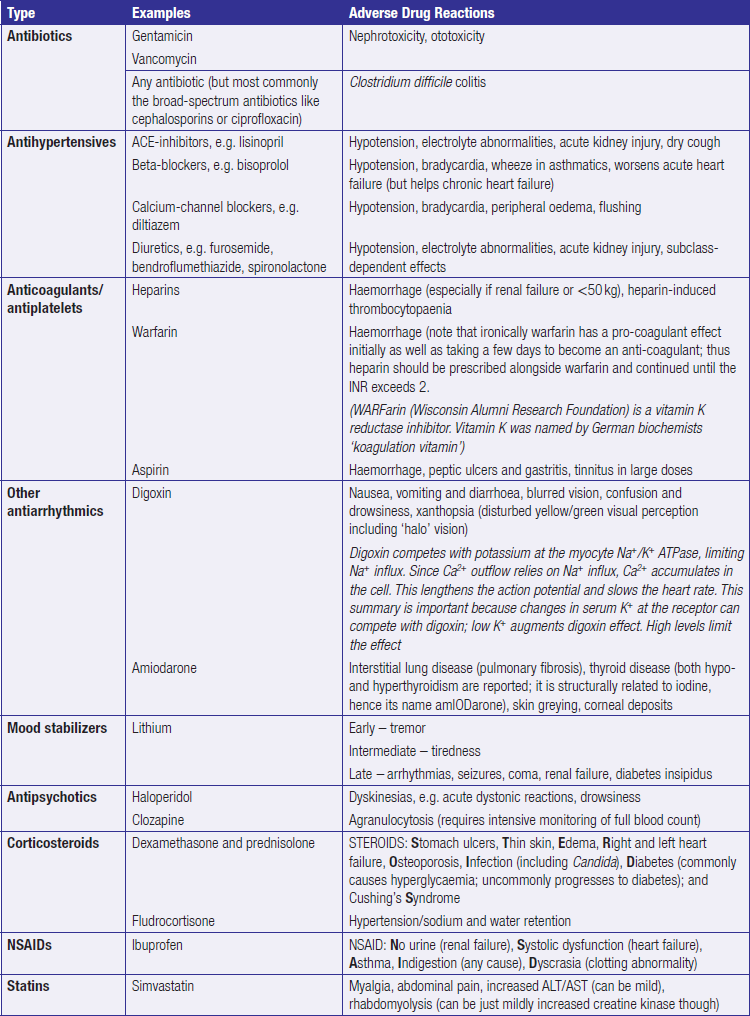Adverse drug reactions
 . Learn to identify and predict adverse reactions for specific drugs.
. Learn to identify and predict adverse reactions for specific drugs.
 . Learn to identify likely drug interactions.
. Learn to identify likely drug interactions.
Structure of this Section within the PSA
The ‘Adverse drug reactions’ section will have 8 questions with 2 marks available per question, so a possible total of 16 marks. You will be asked to identify the most appropriate option from a list of five for each scenario.
Type 1: Adverse Effects of Common Drugs
This question will ask you to identify adverse effects associated with a specific drug. (See Chapter 2 for theory).
Type 2: Recognizing the Common Reactions
This question will ask you to identify the most likely drug to have caused a specific presentation. (See Chapter 2 for theory).
Type 3: Clinically Important Drug Interactions
To answer this question type, you will need to identify potential interactions between prescribed drugs and state those that are of clinical importance. Table 9.2 summarizes the information below.
Table 9.2
| Drugs with a narrow therapeutic index: warfarin, digoxin, phenytoin, theophylline | Drugs which require careful dosage control: antihypertensives, antidiabetic drugs |
| Enzyme inducers: | Enzyme inhibitors (most common): ketoconazole, ciprofloxacin and erythromycin. Do not forget grapefruit juice (not included below)! |
| PC BRAS: | AODEVICES: |
| Phenytoin | Allopurinol |
| Carbamazepine | Omeprazole |
| Barbiturates | Disulfiram |
| Rifampicin | Erythromycin |
| Alcohol (chronic) | Valproate |
| Sulphonylureas | Isoniazid |
| Synergistic effects: β-blockers and verapamil together may cause profound hypotension and asystole and the combination is therefore avoided (and strictly contraindicated if IV verapamil) | CiprofloxacinEthanol (acute intoxication)Sulphonamides |
Stay updated, free articles. Join our Telegram channel

Full access? Get Clinical Tree


 .
. 
